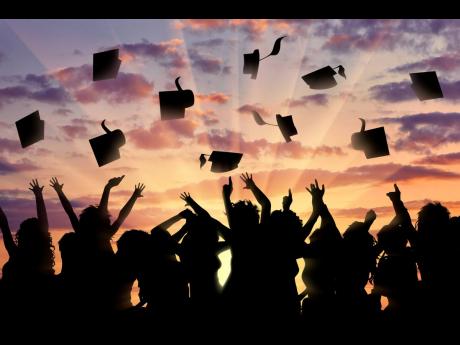Kristen Gyles | Saga of two Jamaican high schools
Consider the story of two Jamaican high schools:
One school, Hopeful High, is the creation of a small group of pious church fathers and started with the full backing of the Catholic church. This provided an opportunity for shared spaces and resources with other Catholic schools and it also guaranteed a safe cushion in the event of financial and other difficulties.
In keeping with the ethos of its founding fathers, Hopeful High instilled a strict sense of discipline in its students, who were thoroughly indoctrinated with ideas on morality, spirituality and religious doctrine. However, many of the unique ideologies and practices only helped to bond the students together and gave them a shared sense of identity.
Over time, graduates of Hopeful High, having a sense of pride in their alma mater, would give back to the school – both in cash and in kind. After all, they were taught all about how it is better to give than to receive and they were taught from an early age the importance of education in transforming society.
As such, the hopeful institution is now awash with money. The school has its own swimming pool, tennis court, basketball court, netball court and football field and can freely employ professionals to train students in these sports. The school also has a vibrant performing arts programme wherein students can explore their interests in dance, drama and music. There is no shortage of musical instruments and interested students can join the school band and learn how to play as many instruments as they like, free of cost. Hopeful, indeed.
A few years after Hopeful High had its genesis, and not long after Jamaica’s independence, Doubtful Academy opened its doors. To help meet the educational needs of a growing society, the academy was built within the Corporate Area along with several other secondary schools, through financial assistance from the World Bank.
RESOURCE CONSTRAINTS
After some time, with the government having full remit and responsibility for the academy’s operations, the school started experiencing serious resource constraints. Students started fighting over chairs because with inadequate adjustments being made to accommodate the eventual growth in the school population, there came a point at which there were fewer chairs than bottoms. Students also started to struggle in key subject areas since there was a shortage of functional lab equipment and other learning tools.
For example, when CSEC students have biology classes they must now use one of the school’s two microscopes and the functionality of one is … well … doubtful. Of course, while the students sit around waiting their turn to use a functional microscope, the devil finds work to occupy them and the teacher gets frustrated with managing a rowdy class. Furthermore, the teachers, who do not get the benefit of pay top-ups from an alumni fund, often have to dig into their pockets to purchase items such as markers and dusters since they are in short supply.
Today, things are looking rather hopeful for Hopeful High. Each year when CSEC and CAPE rankings are done, it emerges a ‘top school’. Parents from all over the Corporate Area, wanting to give their child the best chances at success in life, flock to the school as soon as PEP results are released each year, hoping to be among the few successful students accepted for transfer. Not only that, but Hopeful High also has a booming extra lessons programme featuring some of the most widely renowned teachers. Students from other not-so-hopeful high schools seek help from the teachers at Hopeful High to secure the best grades in their external exams. At Hopeful, there is a strong culture of academic excellence and students are expected to perform at a high level regardless of their background, career aspirations or involvement in co-curricular activities.
DOUBTFUL
On the other hand, things are looking doubtful at Doubtful Academy, mostly because those poor kids are not expected to do anything more than scrape through with a few passes. There is no pressure to cop any distinctions and certainly no pressure to top the island or the Caribbean in CSEC or CAPE exams. Students at Doubtful Academy don’t even bother to seek after trivialities like extra lessons because the culture among the parents is such that such silly things are a waste of money, which is short.
Without a supportive alumni base or large enough group of interested parents to help build the school beyond the standard governmental support, what will happen to Doubtful Academy? To ask a tongue-in-cheek type of question, which school would you prefer for your PEP-sitting son or daughter?
The answer explains the phenomenon that occurs every year, of parents fighting tooth and nail to get their students transferred into ‘choice’ schools. The reality is that all schools are equal, but some are more equal than others. While a student can bloom wherever they are planted, it is foolhardy to plant a rosebush in the desert and expect it to grow well without special attention. Unfortunately, however, there are only so many ‘choice’ schools and no more.
Wouldn’t it be good if we could transform our education system into one in which resources are available to schools in equal or near equal amounts? Certainly, this would help to reduce the inequity across the education system. We all want our children to end up on the fortunate end of this inequitable reality, but it is far better for us to focus on reducing the inequity. The first step in this regard is to take a second look at the way our schools are resourced. Does it take a church and its funding to run a good school?
Kristen Gyles is a free-thinking public affairs opinionator. Send feedback to kristengyles@gmail.com and columns@gleanerjm.com.

